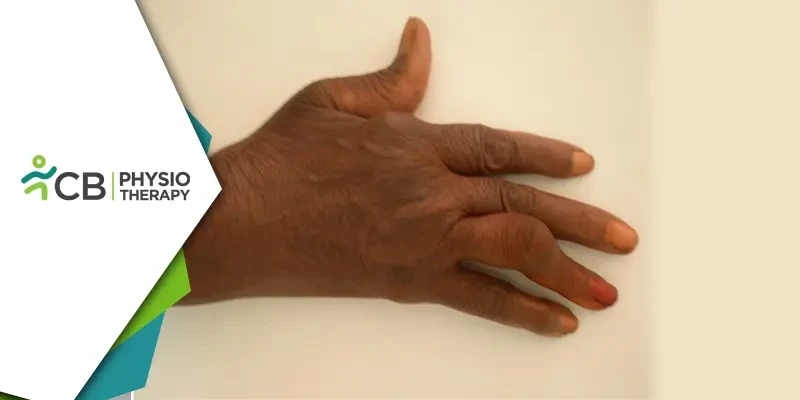Rheumatoid arthritis (RA) is a chronic, inflammatory autoimmune disorder primarily affecting the joints. Unlike osteoarthritis, which results from wear and tear, RA occurs when the immune system mistakenly attacks the body's tissues, leading to inflammation, pain, and eventual joint damage. This autoimmune response primarily targets the synovium, the lining of the membranes surrounding the joints, causing inflammation that can invade and destroy cartilage and bone within the joint. The precise cause of RA remains unknown, but genetic and environmental factors play significant roles.
Common Deformities Associated with Rheumatoid Arthritis
RA is characterized by joint inflammation, pain, and deformity. Deformities occur when chronic inflammation leads to joint damage, erosion, and destruction of the bone and cartilage. Some common deformities associated with RA include:1: Ulnar Deviation: One of the hallmark deformities of RA, ulnar deviation, occurs when the fingers deviate towards the ulna, or the outer side of the arm. This is typically caused by damage to the joint structures and weakening of the tendons and ligaments.
2: Swan Neck Deformity: This deformity is characterized by hyperextension of the proximal interphalangeal (PIP) joint and flexion of the distal interphalangeal (DIP) joint. It occurs due to an imbalance in the muscles and tendons around the affected joints.
3: Boutonnière Deformity: In this condition, the PIP joint is bent towards the palm (flexion), while the DIP joint is bent back away (hyperextension). It results from the detachment or rupture of the extensor tendon at the PIP joint.
4: Rheumatoid Nodules: These are firm lumps that appear under the skin, often near the affected joints. They are non-tender and usually occur in areas subjected to pressure.
5: Hammer Toe and Claw Toe: These deformities affect the toes, leading to abnormal bending. Hammer toe involves bending of the middle joint of the toe, while claw toe results in the toe bending into a claw-like position.
6: Z-Deformity of the Thumb: This involves hyperextension of the first joint of the thumb and flexion of the second joint, resulting in a Z-shaped appearance.
Impact of Deformities on Patients' Lives
The deformities associated with RA significantly impact patients' quality of life. They can lead to:1: Reduced Mobility: Deformities limit the range of motion in the affected joints, making it challenging to perform daily activities such as dressing, eating, and writing.
2: Pain and Discomfort: Chronic pain and stiffness are common, leading to discomfort and reduced physical activity.
3: Psychological Effects: The visible deformities can cause self-esteem issues and lead to social withdrawal and depression.
4: Functional Limitations: The inability to use the hands and feet properly can hinder work and leisure activities, affecting overall productivity and independence.
Role of Physiotherapy in Managing Rheumatoid Arthritis Deformities
Physiotherapy plays a crucial role in managing RA and its associated deformities. It aims to reduce pain, improve joint function, enhance mobility, and prevent further deformities. Here are some key physiotherapy interventions:1: Exercise Therapy
Exercise is fundamental in managing RA. A physiotherapist will design an individualized exercise program that includes:
a) Range of Motion Exercises: These exercises help maintain joint flexibility and prevent stiffness. They involve gently moving the joints through their full range of motion.
b) Strengthening Exercises: Strengthening the muscles around the joints provides better support and reduces the strain on the affected joints. Isometric exercises, which involve muscle contractions without joint movement, are particularly beneficial for RA patients.
c) Aerobic Exercises: Low-impact aerobic exercises, such as walking, swimming, and cycling, improve cardiovascular health and overall fitness without putting excessive strain on the joints.
2: Manual Therapy
Manual therapy techniques, including joint mobilization and soft tissue manipulation, can help reduce pain and improve joint function. These techniques involve the physiotherapist using their hands to apply pressure and manipulate the affected joints and tissues.
3: Hydrotherapy
Hydrotherapy, or aquatic therapy, involves exercises in a warm water pool. The buoyancy of water reduces the load on the joints, making movement easier and less painful. The warmth of the water also helps relax muscles and reduce stiffness.
4: Splinting and Orthotic Devices
Splints and orthotic devices can support, reduce pain, and prevent or correct deformities. They help maintain proper joint alignment and reduce strain on the affected joints. Custom-made splints are often used for the hands and wrists, while orthotic inserts can support the feet and ankles.
5: Pain Management:
Techniques to manage pain, include Tens, ultrasound, heat and cold therapy, and relaxation techniques.
a) Transcutaneous electrical nerve stimulation (TENS): Transcutaneous electrical nerve stimulation (TENS) blocks pain signals from reaching the spinal cord. It helps to decrease muscle spasms, synovial fluid, and inflammation.
b) Therapeutic ultrasound: Ultrasound uses sound waves to create warmth, decreasing joint pain, inflammation, and stiffness.
c) Ice therapy: Ice therapy decreases swelling and inflammation. Cryotherapy can be used as ice packs and cold compresses in acute stages. Cold therapy is used in active joints where intra-articular heat increase is undesired.
d) Heat therapy: Heat therapy is used in chronic stages of rheumatoid arthritis. It reduces muscle spasms. Heat therapy can be used for 10–20 minutes once or twice a day before exercise in the form of a hot pack, hot water bath, hot water bottle, hydrotherapy, infrared radiation, paraffin, etc.
6: Functional Training
Functional training focuses on improving the ability to perform daily activities. This may include:
a) Balance and Coordination Exercises: To reduce the risk of falls and improve stability.
b) Task-Specific Training: Practicing activities of daily living, such as dressing, cooking, and grooming, to enhance independence and confidence.
We hope this article has provided valuable insights into managing rheumatoid arthritis deformities through physiotherapy. If you have any questions or need further information, please don't hesitate to reach out to us. For inquiries, appointments, and more details about our services, Feel free to contact us directly at 01140846393. We're here to help you manage your rheumatoid arthritis effectively and improve your quality of life.

